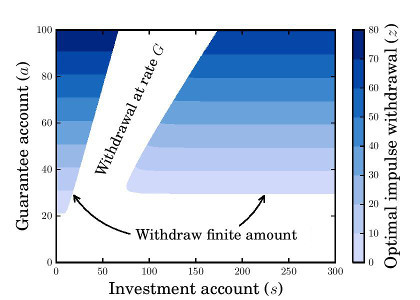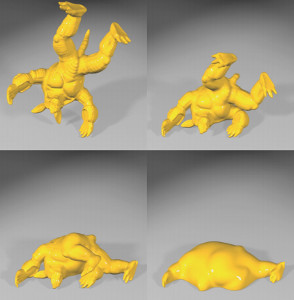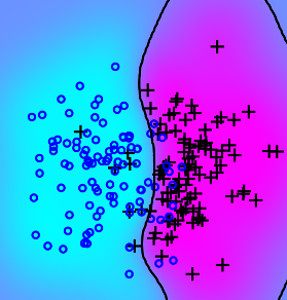Research
Computational Finance

Research in the SciCom group focuses on developing option pricing algorithms which take into account real market effects, such as liquidity constraints in times of crisis. Other applications of this research include optimal trade execution, long term insurance guarantees, and optimal asset allocation. SciCom group members have also recently applied machine learning techniques to financial problems.
For an introduction to this area, you can download An Introduction to Computational Finance without Agonizing Pain.
Recent MMath and PhD graduates in the field are currently employed by such organizations as: CIBC, Morgan-Stanley (NYC), ScotiaBank (Toronto) and the Royal Bank (Toronto).
Faculty
Computational Neuroscience

A normal human brain contains 85 billion neurons that pass electrical signals to each other. The brain exhibits macroscopic and microscopic organization. Somehow, this vast network of neurons takes sensory input (vision, hearing, etc.) and computes an appropriate response (motion, memories, etc.). But how do natural processes tune the neural connections so that animals - like humans - exhibit intelligent behaviour? What computational strategies does the brain use to do the amazing things it does?
In computational neuroscience, we model brain circuits using computer simulations of networks of spiking neurons. We build these models guided by neuroanatomy, and compare the results of the simulations to data collected from living brains. Usually, our models are coded into the Nengo neural simulation language.
Much of this research takes place in conjunction with the Centre for Theoretical Neuroscience.
Faculty
Physics-Based Animation

Computer animation of natural phenomena for cinematic visual effects and computer gaming increasingly relies on principled computational modeling and simulation of physics; such tools allow artists to convincingly animate effects that might otherwise be tedious, dangerous, expensive, or even impossible to achieve with traditional techniques. Members of SciCom have developed simulation techniques for a diverse range of phenomena, including splashing water, viscous liquids such as honey or syrup, aurorae, plant growth, exploding rigid objects, solid-fluid interaction, and surface tension effects.
A number of these techniques have been integrated into commercial visual effects software (e.g., Side Effects Software's Houdini, Autodesk's Maya/BiFrost) and used on major blockbuster film franchises (e.g., Avatar, X-Men, Harry Potter, etc.)
A concise overview of this field can be found in the Science article Computational Physics in Film.
Faculty
Network Analysis

Connectivity is an essential ingredient of life. Our species constantly and increasingly interact at financial, political and cultural level. Physical networks are used as a tool of human interaction, e.g., transportation, electricity, telephone and internet networks. Furthermore, health care, banking, shopping, education, and government are brought to us by physical or social networks. Humans interact with each other constantly through social media over the internet. Our bodies and minds are also manifestations of networks. Biology researchers study animals by examining interactions among proteins. Neuroscientists study how the human brain functions through the interaction of brain regions. Even modern devices interact with each other over the internet through complicated protocols. In our group we develop optimization models, algorithms and high performance computing software for network analysis. Examples include algorithms and models for local graph clustering and community detection.
Faculty
Data Mining

With the increasing accumulation of data, efficient and effective data mining methods have the potential to offer solutions to challenging problems faced in finance, business, and health care. As accumulation of data becomes a standard practice, data mining problems are becoming bigger and bigger. Effective and efficient large-scale computational methods that are able to tackle challenging data learning problems, including supervised, semi-supervised or unsupervised learning, are continually active research areas, especially for big data problems.
Examples of active research topics from group members include feature selection in SVM, Semisupervised SVM, and Ranking for rare class (RankRC) for the rare class learning. In additional to developing algorithms for general data mining, we also focus on data mining problems from finance and insurance industry, as well as for image analysis.




